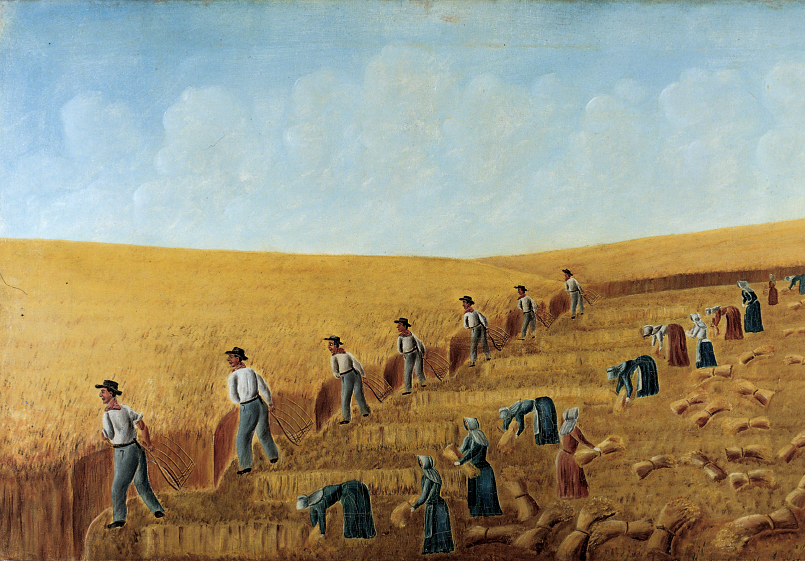What factors contributed to the United States’ “industrial evolution”?
Printed Page 328
DURING THE 1840S AND 1850S, Americans experienced a profound economic transformation. Since 1800, the total output of the U.S. economy had multiplied twelvefold. Four fundamental changes in American society fueled this remarkable economic growth.
Changes That Led to Economic Growth
> Changes That Led to Economic Growth
- Millions of Americans moved from farms to towns and cities.
- Factory workers (primarily in towns and cities) increased to about 20 percent of the labor force by 1860.
- A shift from water power to steam as a source of energy raised productivity, especially in factories and transportation. Railroads in particular harnessed steam power, speeding transport and cutting costs.
- Agricultural productivity nearly doubled between 1800 and 1860, spurring the nation’s economic growth more than any other factor.
Historians often refer to this cascade of changes as an industrial revolution. However, these changes did not cause an abrupt discontinuity in America’s economy or society, which remained overwhelmingly agricultural. Old methods of production continued alongside the new. The changes in the American economy during the 1840s and 1850s might better be termed “industrial evolution.”

CHAPTER LOCATOR
What factors contributed to the United States’ “industrial evolution”?
How did the free-labor ideal account for economic inequality?
What factors spurred westward expansion?
Why did the United States go to war with Mexico?
How did reform movements change after 1840?
Conclusion: How was white freedom in the West and North defined?
 LearningCurve
LearningCurve
Check what you know.
CHRONOLOGY
1837
- – Steel plow is patented.
1840s
- – Practical mechanical reapers are created.
1844
- – Samuel F. B. Morse demonstrates telegraph.
1850
- – Railroads are granted six square miles of land for every mile of track.
1861
- – California is connected to the nation by telegraph.